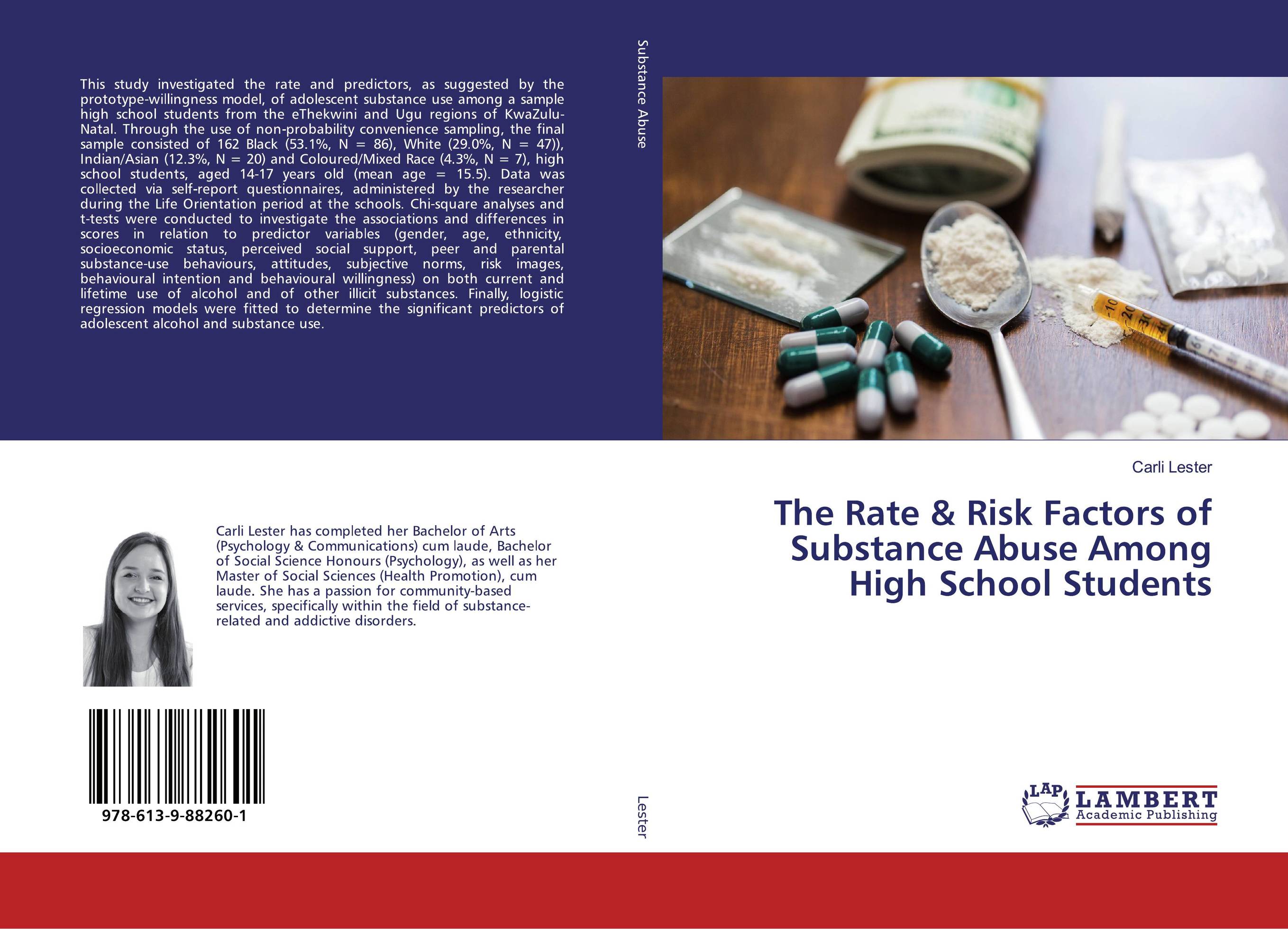| Поиск по каталогу |
|
(строгое соответствие)
|
- Профессиональная
- Научно-популярная
- Художественная
- Публицистика
- Детская
- Искусство
- Хобби, семья, дом
- Спорт
- Путеводители
- Блокноты, тетради, открытки
The Rate & Risk Factors of Substance Abuse Among High School Students.

В наличии
| Местонахождение: Алматы | Состояние экземпляра: новый |

Бумажная
версия
версия
Автор: Carli Lester
ISBN: 9786139882601
Год издания: 2019
Формат книги: 60×90/16 (145×215 мм)
Количество страниц: 148
Издательство: LAP LAMBERT Academic Publishing
Цена: 36982 тг
Положить в корзину
| Способы доставки в город Алматы * комплектация (срок до отгрузки) не более 2 рабочих дней |
| Самовывоз из города Алматы (пункты самовывоза партнёра CDEK) |
| Курьерская доставка CDEK из города Москва |
| Доставка Почтой России из города Москва |
Аннотация: This study investigated the rate and predictors, as suggested by the prototype-willingness model, of adolescent substance use among a sample high school students from the eThekwini and Ugu regions of KwaZulu-Natal. Through the use of non-probability convenience sampling, the final sample consisted of 162 Black (53.1%, N = 86), White (29.0%, N = 47)), Indian/Asian (12.3%, N = 20) and Coloured/Mixed Race (4.3%, N = 7), high school students, aged 14-17 years old (mean age = 15.5). Data was collected via self-report questionnaires, administered by the researcher during the Life Orientation period at the schools. Chi-square analyses and t-tests were conducted to investigate the associations and differences in scores in relation to predictor variables (gender, age, ethnicity, socioeconomic status, perceived social support, peer and parental substance-use behaviours, attitudes, subjective norms, risk images, behavioural intention and behavioural willingness) on both current and lifetime use of alcohol and of other illicit substances. Finally, logistic regression models were fitted to determine the significant predictors of adolescent alcohol and substance use.
Ключевые слова: Substance Use, High School Students, Adolescents, risk factors, South Africa, KwaZulu-Natal, Prototype, willingness model



